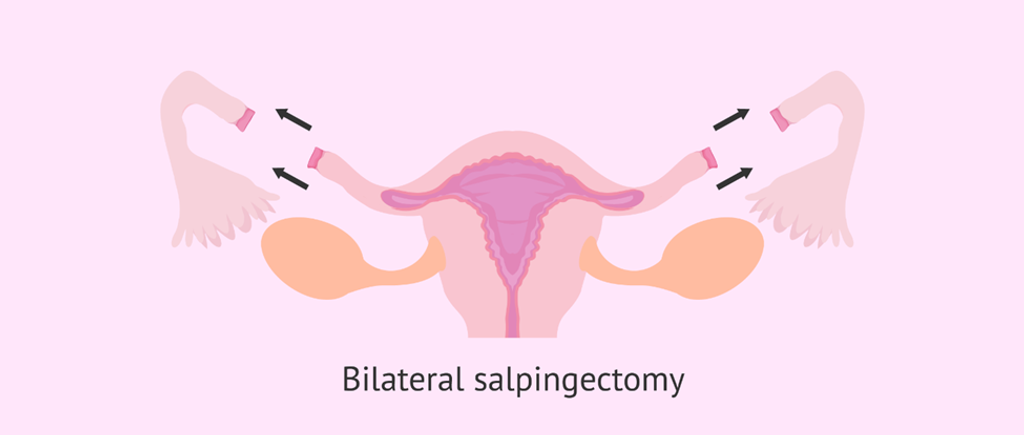Elizabeth Kough was no stranger to the feeling of pregnancy. As a mother of three, she knew the signs well. But last year, when she found herself staring at a positive result on a home pregnancy test, disbelief and panic set in. This time, the joy of new life came with an unsettling twist—three years earlier, she had undergone a bilateral salpingectomy, a procedure to remove both fallopian tubes that should have rendered conception impossible. How, then, could she be pregnant? Her doctors were astounded, dubbing her case as that of a “miracle baby” given the absence of fallopian tubes, which typically facilitate the journey of an egg from the ovary to the womb.
Miracle Baby: A Shock That Defied Science
Kough, 39, was at home in Kearney, Missouri, when she took the test that changed everything. The pregnancy result felt surreal; she woke her boyfriend in a panic, and they rushed to the hospital, her mind swirling with fear and confusion. After confirming the pregnancy, Kough demanded an ultrasound, terrified the embryo might be lodged outside her uterus, where it could be life-threatening.
To her immense relief, the scan revealed a tiny fetus nestled safely in her uterus, developing normally. The disbelief, however, didn’t fully dissipate. In March, Kough gave birth to a healthy baby boy named Benjamin at North Kansas City Hospital—a child she never expected but now couldn’t imagine life without.
“Of course, at first, I was shocked, and I was like, ‘This isn’t part of my plan,’” Kough admitted.
“But now, sometimes the best-laid plans, you need just to do away with those. He is a beautiful baby. I am exceptionally lucky to have him in my life.”
A Rare Phenomenon in Medical Literature
Scarce medical data support the improbability of Kough’s pregnancy. According to the American College of Obstetricians and Gynaecologists, pregnancies can occur in women who have had partial removal of their fallopian tubes at a rate of about 7.5 per 1,000. However, there is no comprehensive data on pregnancies following a complete bilateral salpingectomy like Kough’s, largely because it’s considered nearly impossible.
The first documented case of pregnancy after bilateral salpingectomy appeared in 2005, involving a 38-year-old woman in the United Kingdom who unexpectedly conceived. It wasn’t until three years later that a second case was published. The rarity of these occurrences speaks volumes about Kough’s case: it’s a medical anomaly, pushing the boundaries of what physicians understand about reproductive anatomy.
Understanding Science: How Could This Happen?
For conception to occur, an egg must travel from the ovaries through the fallopian tubes, where fertilization occurs. The fertilized egg then moves to the uterus, where it implants and grows. Without fallopian tubes, this journey would be interrupted, making natural conception almost impossible unless assisted by in-vitro fertilization (IVF). Kough, however, did not use IVF or any other assisted reproductive techniques.

A possible explanation for Kough’s pregnancy lies in transperitoneal migration. A 2007 article published in the Singapore Medical Journal theorized that in rare cases, women who have undergone bilateral salpingectomy might experience incomplete closure of the area where the tubes once connected to the uterus. In such cases, an egg could travel across the peritoneal cavity—the space within the abdomen—through a narrow gap between the ovary and uterus, meeting sperm at precisely the right moment to achieve fertilization.
While this scenario sounds improbable, it’s not entirely outside the realm of possibility.
Kough’s case serves as a reminder of the body’s unpredictability and the limitations of medical certainty. A bilateral salpingectomy is considered one of the most effective methods of birth control, but Kough’s story underscores that no procedure, no matter how definitive, is completely foolproof.
“When I had the procedure done, they were like, ‘It’s about as close to 100% as you can get,’” Kough recalled.
Fallopian Tubes Removal: A Procedure Meant for Peace of Mind
A desire for peace of mind drove Kough’s decision to have a bilateral salpingectomy in 2015. At 35, she was recently divorced, raising three children, and felt her family was complete. Also, with her family’s history of ovarian cancer, removing her fallopian tubes also greatly reduced her risk of developing the disease. “It seemed like a win-win,” Kough explained. The procedure was performed in Virginia, and the surgical notes confirmed the successful removal of both tubes.
After moving back to Missouri, Kough’s unexpected pregnancy puzzled her doctors. Some speculated that the surgery might have been botched, but Kough’s medical records told a different story. Pathology reports confirmed that the tubes had indeed been removed, and there were no anatomical abnormalities to explain the conception. Even during her caesarean section, surgeons double-checked, finding no trace of her fallopian tubes.
“They said, ‘No, there’s nothing there. The surgeon did everything correctly. There are no tubes,’” Kough recounted.
It was official: Benjamin’s birth was nothing short of a medical miracle.
Life’s Unexpected Turns
Today, Benjamin is thriving, surrounded by his doting family. Kough’s older children, ages 17, 11, and 9, are smitten with their new baby brother, though she often reminds them not to overwhelm him with attention. Initially shocked by the sudden shift in their lives, her boyfriend embraced fatherhood with love and enthusiasm.
Kough remains in awe of her unexpected journey into motherhood once again.
“I don’t know if he was just a medical miracle and a 1-in-a-million chance or if he was meant to be,” she said.
“I’m just a little person. I don’t know about the greater universe and God’s plan for us. But I do know that he’s very special. Special to me and our family.”
Lessons for Medical Practice
Elizabeth Kough’s case is a stark reminder for physicians and medical professionals that rare exceptions occur, even when surgical interventions are performed flawlessly. While a bilateral salpingectomy is considered nearly foolproof, Kough’s story shows that biology can defy expectations unexpectedly.
It emphasizes the importance of thorough follow-up, careful consideration of patient symptoms, and, above all, a recognition that medicine, despite all its advancements, is occasionally at the mercy of the extraordinary.
For doctors, Kough’s pregnancy is both a marvel of human biology and a testament to the unpredictability inherent in medical practice. It challenges clinicians to keep an open mind and remember that outliers exist, as rare as they may be. In a field driven by evidence and probabilities, Kough’s story is a humbling reminder that life can find a way, even against seemingly insurmountable odds.
Disclaimer: The content provided on this platform is intended for informational purposes only and does not replace professional medical advice, diagnosis, or treatment. Some materials may originate from third-party sources, and the views expressed are solely those of the respective authors or entities, not Docquity. Docquity does not warrant the accuracy, reliability, or completeness of the content and disclaims any responsibility for it. Users are advised to independently verify all information before acting upon it.
Reference
Marso A. “Miracle baby”: Woman gets pregnant after having fallopian tubes removed [Internet]. Medicalxpress.com. Medical Xpress; 2019 [cited 2024 Sep 5]. Available from: https://medicalxpress.com/news/2019-05-miracle-baby-woman-pregnant-fallopian.html#google_vignette
About Docquity
If you need more confidence and insights to boost careers in healthcare, expanding the network to other healthcare professionals to practice peer-to-peer learning might be the answer. One way to do it is by joining a social platform for healthcare professionals, such as Docquity.
Docquity is an AI-based state-of-the-art private & secure continual learning network of verified doctors, bringing you real-time knowledge from thousands of doctors worldwide. Today, Docquity has over 400,000 doctors spread across six countries in Asia.
Meet experts and trusted peers across Asia where you can safely discuss clinical cases, get up-to-date insights from webinars and research journals, and earn CME/CPD credits through certified courses from Docquity Academy. All with the ease of a mobile app available on Android & iOS platforms!







